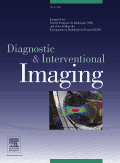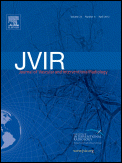
Journal of NeuroInterventional Surgery
Scope & Guideline
Leading the Charge in NeuroInterventional Research.
Introduction
Aims and Scopes
- Endovascular Treatment Techniques:
The journal covers various endovascular procedures including thrombectomy, stenting, and embolization techniques for treating conditions like acute ischemic stroke, cerebral aneurysms, and arteriovenous malformations. It emphasizes technical advancements and procedural efficiency. - Imaging and Diagnostic Innovations:
Research on imaging modalities, such as CT, MRI, and advanced angiographic techniques, is a core area. The journal highlights studies that enhance diagnostic accuracy and treatment planning for neurovascular conditions. - Clinical Outcomes and Patient Safety:
The journal prioritizes studies that evaluate clinical outcomes, including complications, recovery rates, and quality of life post-intervention. It also addresses patient safety through risk assessments and management strategies. - Artificial Intelligence and Machine Learning Applications:
There is a growing focus on the integration of AI and machine learning in neurointerventional surgery. The journal publishes research on predictive modeling, automated detection systems, and decision support tools aimed at improving surgical outcomes. - Health Economics and Cost-Effectiveness:
Research on the economic aspects of neurointerventional practices, including cost-effectiveness analyses and resource utilization, is increasingly featured, reflecting the journal's commitment to addressing healthcare delivery challenges.
Trending and Emerging
- Minimally Invasive Techniques and Innovations:
A strong trend towards the development and refinement of minimally invasive techniques for treating complex neurovascular conditions is evident. This includes advancements in catheter technology, embolization devices, and thrombectomy protocols. - Artificial Intelligence and Automation:
The integration of AI in diagnostics and treatment planning is rapidly emerging. The journal is increasingly publishing studies on machine learning applications that enhance decision-making processes in neurointerventional surgery. - Patient-Centered Outcomes and Quality of Life:
Research focusing on long-term outcomes and quality of life metrics post-intervention is gaining traction. This trend emphasizes the importance of patient perspectives in evaluating the success of neurointerventional procedures. - Diversity and Inclusion in Research:
A growing emphasis on the diversity of study populations and recognition of disparities in treatment outcomes is emerging. This includes investigations into gender, race, and socioeconomic factors influencing neurointerventional care. - Cost-Effectiveness and Health Policy:
There is an increasing focus on health economics, particularly studies assessing the cost-effectiveness of various neurointerventional strategies. This trend reflects a broader interest in optimizing healthcare delivery and resource allocation.
Declining or Waning
- Traditional Surgical Techniques:
There is a noticeable decrease in publications focusing on open surgical techniques for managing neurovascular diseases, as the field shifts towards more minimally invasive endovascular approaches. - Basic Laboratory Research:
Studies centered on basic science and laboratory models are becoming less prominent, possibly due to the increasing emphasis on clinical applicability and direct patient care outcomes. - Single-Center Studies:
There is a trend away from single-center studies as the field moves towards multicenter collaborations and larger cohort analyses that provide more generalizable data. - Older Imaging Techniques:
Research focusing on older imaging modalities, such as conventional angiography, is declining in favor of studies utilizing advanced imaging technologies that offer improved resolution and diagnostic capabilities. - Less Focus on Non-Interventional Management:
There is a diminishing emphasis on non-interventional management strategies, such as conservative management of cerebrovascular conditions, as the field increasingly prioritizes interventional techniques.
Similar Journals

Turkish Journal of Urology
Unveiling the Future of Urology Through Open AccessTurkish Journal of Urology, published by AVES, is a distinguished academic journal dedicated to the field of urology. As an open-access journal since 2022, it aims to disseminate high-quality research findings, clinical studies, and reviews that contribute to the advancement of urological science and practice. With a notable presence in the academic community, the journal currently holds a Scopus rank of #59 out of 107 in the Medicine _ Urology category, placing it in the 45th percentile. This positions the Turkish Journal of Urology as a vital resource for researchers, healthcare professionals, and students seeking to stay informed on the latest developments and innovations in urology. Publishing from its base in Istanbul, Turkiye, the journal emphasizes accessibility and visibility, making it a powerful platform for scholarly communication in an increasingly globalized field.

JOURNAL OF CARDIOVASCULAR SURGERY
Innovating practices, enhancing lives.JOURNAL OF CARDIOVASCULAR SURGERY, published by EDIZIONI MINERVA MEDICA, stands as a pivotal resource in the field of cardiovascular medicine and surgical practices. With a rich history dating back to 1960 and ongoing contributions scheduled until 2024, this esteemed journal provides a platform for the dissemination of innovative research in cardiology and surgical techniques. Registered under ISSN 0021-9509 and E-ISSN 1827-191X, it holds a commendable standing reflected in its Scopus rankings, placing it in the second quartile for both cardiology and cardiovascular medicine, as well as surgery. Despite not currently offering Open Access, the journal remains a vital source for practitioners and researchers alike, facilitating a deeper understanding of advancing methodologies and clinical practices in cardiovascular surgery. The journal is headquartered in Turin, Italy, and is committed to nurturing academic excellence within the community, making it an essential read for professionals, researchers, and students striving to enhance their knowledge and expertise in this critical field.

EUROPEAN JOURNAL OF RADIOLOGY
Elevating Standards in Radiology and ImagingThe European Journal of Radiology, published by Elsevier Ireland Ltd, is a premier peer-reviewed journal in the fields of radiology, nuclear medicine, and imaging. Established in 1981, it has carved a significant niche within the academic community, showcasing innovative research that enhances medical imaging practices and improves patient care. With an impressive ranking in the Q1 category for both Medicine (miscellaneous) and Radiology, Nuclear Medicine, and Imaging in 2023, the journal is recognized globally for its commitment to advancing scientific knowledge and improving imaging methodologies. The journal's Scopus ranking of #60/333, placing it in the 82nd percentile, underlines its reputation for high-quality research and scholarly contributions. While traditionally a subscription-based journal, it continually evolves to meet the demands of the academic landscape, aiming to bridge the gap between research and clinical practice. Researchers, healthcare professionals, and students alike can benefit from exploring its extensive archives and current publications, which are curated to foster education and innovation in the medical imaging domain.

Indian Journal of Vascular and Endovascular Surgery
Pioneering Research for the Future of Endovascular SurgeryThe Indian Journal of Vascular and Endovascular Surgery, published by Wolters Kluwer Medknow Publications, serves as a premier platform dedicated to advancing research and clinical practices in the fields of vascular and endovascular surgery. With an E-ISSN of 2394-0999 and a commitment to open access since 2015, this journal provides invaluable insights to researchers, professionals, and students alike, fostering a collaborative environment for the dissemination of knowledge. By focusing on innovative techniques, case studies, and systematic reviews, the journal plays a vital role in enhancing clinical outcomes and promoting evidence-based practices within the vascular community. Its commitment to high-quality research and accessibility positions it as an essential resource in the landscape of surgical literature, encouraging further exploration and collaboration within this critical area of healthcare.

Journal of Clinical Urology
Advancing Urological Excellence Through ResearchThe Journal of Clinical Urology, published by SAGE Publications Ltd, is a prominent academic platform dedicated to advancing the field of urology and surgical medicine. With an ISSN of 2051-4158 and an E-ISSN of 2051-4166, this journal has been pivotal in disseminating cutting-edge research since its inception in 2008 and is set to continue through 2024. Although categorized in the Q4 quartile for both Surgery and Urology, and positioned in the 24th and 22nd percentiles respectively according to Scopus rankings, the journal remains an essential resource for professionals, researchers, and students who seek to understand clinical developments and innovative practices in urological surgery. While the journal does not operate under an Open Access model, it provides critical insights and valuable findings that significantly impact healthcare practices and patient outcomes in the urology field.

Diagnostic and Interventional Imaging
Leading the Way in Diagnostic and Interventional BreakthroughsDiagnostic and Interventional Imaging, published by Elsevier Masson, stands as a prominent journal in the fields of Radiology, Nuclear Medicine, and Imaging. With a significant impact factor and a reputation for high-quality research, this journal is dedicated to advancing the understanding and application of diagnostic and interventional imaging techniques. It has achieved an impressive Q1 ranking across multiple categories including Medicine (miscellaneous) and Radiological and Ultrasound Technology, demonstrating its esteemed position within the academic community. The journal features cutting-edge studies and reviews, reflecting the latest innovations and practices from 2012 to 2024. Researchers, healthcare professionals, and students alike can look forward to accessing valuable insights that drive forward the discipline and improve patient outcomes, as evidenced by its robust Scopus rankings placing it among the top journals in its domain.

Turk Gogus Kalp Damar Cerrahisi Dergisi-Turkish Journal of Thoracic and Cardiovascular Surgery
Connecting Scholars to Transform Patient Care.Welcome to the Turk Gogus Kalp Damar Cerrahisi Dergisi (Turkish Journal of Thoracic and Cardiovascular Surgery), a distinguished publication focused on advancing the fields of cardiovascular and thoracic surgery. Published by BAYCINAR MEDICAL PUBL, this journal plays a crucial role in disseminating high-quality research and clinical findings from Turkey and beyond. With an ISSN of 1301-5680, the journal covers interdisciplinary topics while holding a respectable Q3 ranking in Surgery and Q4 rankings in both Cardiology and Pulmonary Medicine as of 2023. Although it currently operates on a subscription basis, researchers and practitioners can access vital insights that drive innovation and improve patient outcomes in cardiovascular care. Established to foster knowledge sharing among professionals and scholars, the journal is essential for anyone involved in the cardiovascular and thoracic surgery landscape. With a commitment to high standards and scholarly excellence, the Turk Gogus Kalp Damar Cerrahisi Dergisi invites you to explore the latest research that shapes the future of patient care.

Turkish Neurosurgery
Shaping the Landscape of Neurosurgery Through ResearchTurkish Neurosurgery is a distinguished journal published by the TURKISH NEUROSURGICAL SOC, dedicated to advancing the field of neurosurgery and clinical neurology. With an ISSN of 1019-5149 and converging its focus from 1990 to 2024, this regional journal aims to bridge the gap in knowledge dissemination within Turkey and beyond. It holds a notable position in the academic community, categorized in the Q3 quartile for both Neurology (clinical) and Surgery in 2023, illustrating its relevance in these critical fields. Although currently not an open-access publication, it offers insights and research findings that are vital for researchers, practitioners, and students who seek to stay abreast of developments in neurosurgical practices. Located in Ankara, Turkiye, Turkish Neurosurgery provides a platform for sharing rigorous research that enhances clinical outcomes and informs surgical techniques, thus playing a crucial role in elevating the standards of neurosurgery in the region.

Clinical Neuroradiology
Pioneering Research for Enhanced Patient Care.Clinical Neuroradiology, published by SPRINGER HEIDELBERG, is a leading journal in the fields of neurology and radiology, focusing on the intersection of clinical practice and cutting-edge imaging technologies. With an impressive impact factor and categorized within Q2 in Neurology (clinical) and Q1 in Radiology, Nuclear Medicine and Imaging, this journal is positioned at the forefront of scientific discourse, facilitating high-quality research dissemination from its origins in 2000 through to 2024. Situated in Germany, Clinical Neuroradiology provides a platform for researchers, professionals, and students to explore the latest advancements and insights in neuroimaging, ensuring that its readership remains at the vanguard of clinical practice. While it does not offer open access, the journal remains committed to fostering a vibrant academic community dedicated to enhancing patient care through innovative neuroradiological techniques and findings.

JOURNAL OF VASCULAR AND INTERVENTIONAL RADIOLOGY
Advancing the Frontiers of Vascular InnovationJOURNAL OF VASCULAR AND INTERVENTIONAL RADIOLOGY, published by Elsevier Science Inc, is a leading interdisciplinary journal dedicated to the advancement of vascular and interventional radiology research and practice. With an ISSN of 1051-0443 and an E-ISSN of 1535-7732, this esteemed journal serves as a vital platform for disseminating high-quality research from 1990 to present, showcasing significant contributions in the fields of cardiology, cardiovascular medicine, and radiology. The journal holds a commendable position within its categories, being ranked in the Q2 quartile for 2023 in cardiology and cardiovascular medicine as well as radiology, nuclear medicine, and imaging, indicating its relevance and impact within these domains. A notable aspect of this journal is its commitment to enlightening the medical community with cutting-edge findings and innovative techniques in interventional radiology, which are crucial for improving patient outcomes. Despite not being an open-access journal, it remains widely accessible through institutional subscriptions, ensuring that researchers, healthcare professionals, and students can engage with and contribute to its rich repository of knowledge.